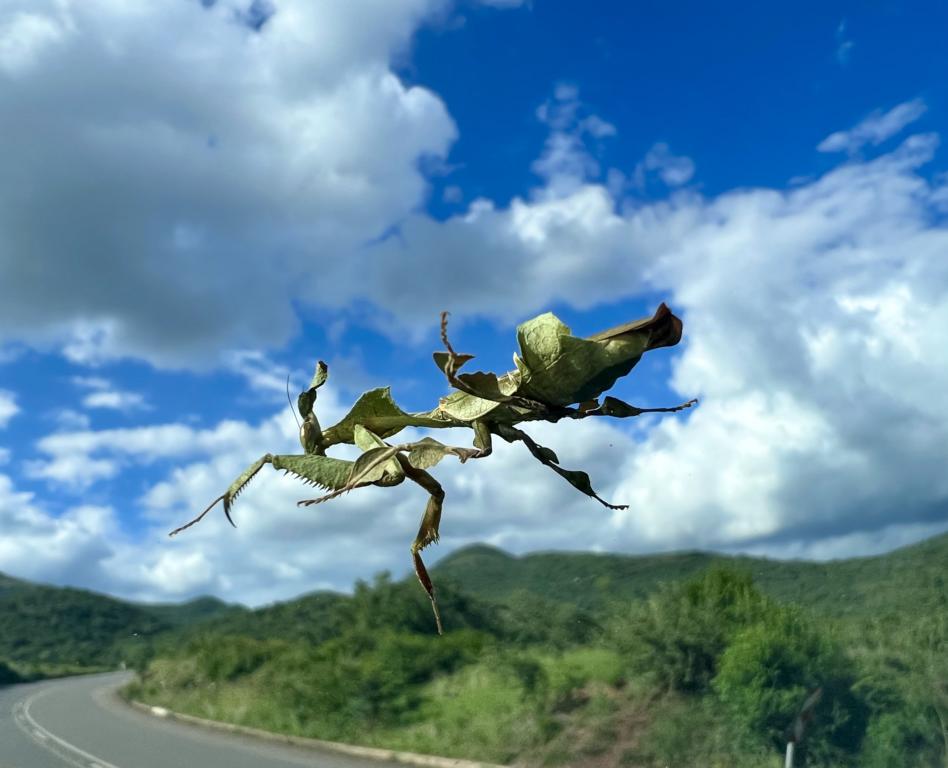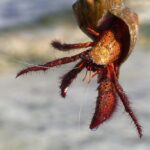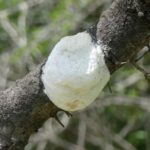Ghost praying mantises (Phyllocrania paradoxa) fit perfectly into our new homepage section called ‘Wonders of Nature’ due to their unique appearance and behavior. They are a species of praying mantis, and four characteristics make them unique. These are an impressive camouflage, an ambush hunting strategy, an unusual defense mechanism, and an exceptional holding power on flat surfaces.

Camouflage
Ghost mantids have a unique, leafy appearance that allows them to blend in with their plant surroundings, making them difficult to spot. Their body shape and coloring resemble those of dead leaves, and they can also sway back and forth like dead leaves in the wind to further enhance their camouflage. This makes them very effective at hunting prey without being seen.
Hunting strategy
Ghost mantids are ambush predators, which means they sit and wait for prey to come to them rather than actively searching for it. They use their excellent camouflage to stay hidden and their long, spiked front legs to grab their prey when it comes within reach. This hunting strategy is very effective, and they are known to be able to catch prey much larger than themselves, like large beetles, spiders, and even young lizards.
Unusual behavior

Ghost mantids are also known for their unusual behavior when threatened. Rather than fleeing or using their front legs to defend themselves like most other mantis species do, ghost mantids will spread their wings and make a hissing sound to scare off predators.
Holding power on flat surfaces
Like all other insects, Ghost Praying Mantises have six legs. Typically, however, they only used four legs for walking, and the third set of legs was converted to a pair of pliers. With heavy spikes to catch and hold their prey when feeding on it.
However, the spikes on the femur and tibia of the first pair of legs are not the only reason for the exceptional holding power of Ghost mantises. According to Hong Liang Sun et al., the microstructure and nanomechanical properties of the foreleg surface significantly strengthen these forelegs. The tip of the apical claw at the end of the tibia is exceptionally hard and sharp, which gives it a tight hold even on amorphous glass surfaces.

When we were driving in KwaZulu-Natal, we discovered a Ghost mantis on our windscreen. We were moving at 60 km/h (about 37 mi/h). Despite the wind, this mantid stood in the middle of the windscreen. This was quite impressive and a real Wonder of Nature.
Lessons learned about Ghost Praying Mantises:
- Ghost mantises are camouflaged like dying or dead leaves (greenish brown).
- They can swing on a twig like a dead leaf would do.
- These mantids are ambush hunters, which can catch prey up to the size of young lizards.
- Instead of fleeing, they will spread their wings and start hissing.
- Their forelegs are reinforced with microstructures and nanomechanical structural elements.
- The material of the apical claws is exceptionally hard, and the claws are extra sharp, which gives them a superior hold on flat surfaces.
.




